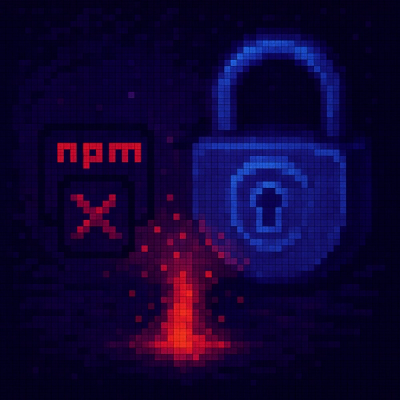ModelChecker
← GitHub Repository | General Docs → | Technical Docs →



A programmatic framework for implementing modular semantic theories powered by the Z3 SMT solver.
Features
- Automated Model Finding: Discovers countermodels to invalid formulas and inferences
- Modular Theory Architecture: Mix and match logical operators for compatible theories
- Hyperintensional Reasoning: Distinguishes necessarily equivalent propositions
- Multiple Model Generation: Find diverse models satisfying a set of formulas
- Theory Library: Pre-built theories to test, adapt, and share with others
Quick Start
Install the package:
pip install model-checker
For development:
git clone https://github.com/benbrastmckie/ModelChecker.git
cd ModelChecker/Code
pip install -e .
NixOS users: Use nix-shell instead. See NixOS Development.
For complete installation guides, see Installation Documentation.
Create a new logic project:
model-checker -l logos
model-checker -l exclusion
model-checker -l imposition
model-checker -l bimodal
Programmatic Semantics
The ModelChecker is a theory-agnostic framework that allows researchers to implement, test, and share semantic theories for logical reasoning. The TheoryLib provides a collection of pre-built theories that can be used directly, modified for specific needs, or serve as templates for developing new theories. Users can upload their own theories to share with the community, fostering collaborative development of computational semantics.
Logos: A Formal Language of Thought
The semantics for the Logos provides a bilateral semantics for a formal language of thought, implementing hyperintensional distinctions with verifier and falsifier sets of states. This approach enables the framework to distinguish between propositions that are necessarily equivalent but differ in content which is critical for modeling fine-grained reasoning about counterfactuals and explanatory operators.
The Logos currently includes operators organized into modular subtheories:
- Extensional operators: Classical logical connectives (
∧, ∨, ¬, →, ↔, ⊤, ⊥)
- Modal operators: Necessity and possibility (
□, ◇)
- Counterfactual operators: Would and might counterfactuals (
□→, ◇→)
- Constitutive operators: Grounding, essence, and identity (
≤, ⊑, ≡)
- Relevance operators: Content connection and relevance (
≼)
The modular architecture allows users to load only the operators needed for their analysis, with automatic dependency resolution ensuring semantic coherence. Additional operators are actively being developed, expanding the theory's expressiveness for new applications in philosophy, logic, linguistics, and AI reasoning.
Semantic Primitives
The framework defines semantic theories by extending the base SemanticDefaults class:
class LogosSemantics(SemanticDefaults):
def __init__(self, combined_settings):
super().__init__(combined_settings)
self.N = combined_settings['N']
self.all_states = [BitVecVal(i, self.N) for i in range(1 << self.N)]
self.null_state = BitVecVal(0, self.N)
self.full_state = BitVecVal((1 << self.N) - 1, self.N)
self.verify = z3.Function("verify", BitVecSort(self.N), AtomSort, BoolSort())
self.falsify = z3.Function("falsify", BitVecSort(self.N), AtomSort, BoolSort())
self.possible = z3.Function("possible", BitVecSort(self.N), BoolSort())
self.main_world = z3.BitVec("w", self.N)
self.main_point = {"world": self.main_world}
self.frame_constraints = [self.is_world(self.main_world), ...]
Key Methods
def fusion(self, bit_s, bit_t):
"""Combines two states using bitwise OR."""
return bit_s | bit_t
def is_part_of(self, bit_s, bit_t):
"""Tests if bit_s is a part of bit_t."""
return (bit_s & bit_t) == bit_s
def compatible(self, state_x, state_y):
"""Determines if the fusion of two states is possible."""
return self.possible(self.fusion(state_x, state_y))
def is_world(self, state_w):
"""Determines if a state is a possible world (possible and maximal)."""
return z3.And(
self.possible(state_w),
self.maximal(state_w)
)
def max_compatible_part(self, state_x, state_w, state_y):
"""Tests if state_x is a maximal part of state_w compatible with state_y.
Used to preserve maximal compatibility in counterfactual semantics."""
z = z3.BitVec("max_part", self.N)
return z3.And(
self.is_part_of(state_x, state_w),
self.compatible(state_x, state_y),
ForAll(
z,
z3.Implies(
z3.And(
self.is_part_of(z, state_w),
self.compatible(z, state_y),
self.is_part_of(state_x, z),
),
state_x == z,
),
),
)
def is_alternative(self, state_u, state_y, state_w):
"""Tests if state_u is a y-alternative world to w by imposing state_y on w.
Alternative worlds contain y and maximal compatible parts of w."""
z = z3.BitVec("alt_z", self.N)
return z3.And(
self.is_world(state_u),
self.is_part_of(state_y, state_u),
Exists(
[z],
z3.And(
self.is_part_of(z, state_u),
self.max_compatible_part(z, state_w, state_y)
)
)
)
def true_at(self, sentence, eval_point):
"""Evaluates if sentence is true at eval_point.
For atoms: `∃x ⊆ w: verify(x, atom)`
For complex: delegates to operator.true_at()"""
eval_world = eval_point["world"]
if sentence.sentence_letter is not None:
x = z3.BitVec("t_atom_x", self.N)
return Exists(x, z3.And(
self.is_part_of(x, eval_world),
self.verify(x, sentence.sentence_letter)
))
return sentence.operator.true_at(*sentence.arguments, eval_point)
def extended_verify(self, state, sentence, eval_point):
"""Tests if state verifies sentence.
For atoms: verify(state, atom)
For complex: delegates to operator.extended_verify()"""
if sentence.sentence_letter is not None:
return self.verify(state, sentence.sentence_letter)
return sentence.operator.extended_verify(
state, *sentence.arguments, eval_point
)
Operators
The framework provides modular operators across five subtheories:
Extensional Operators
¬ - Negation (swaps verifiers/falsifiers)∧ - Conjunction (fuses verifiers, distributes falsifiers)∨ - Disjunction (distributes verifiers, fuses falsifiers)→ - Material conditional↔ - Biconditional⊤ - Tautology (always true)⊥ - Contradiction (always false)
Modal Operators
□ - Necessity (true at all worlds)◇ - Possibility (true at some world)
Counterfactual Operators
□→ - Would counterfactual◇→ - Might counterfactual
Constitutive Operators
≤ - Grounding (A grounds B)⊑ - Essence (A is essential to B)≡ - Constitutive equivalence
Counterfactual Operator Implementation
The counterfactual operator (□→) demonstrates the framework's approach:
Truth Conditions
def true_at(self, leftarg, rightarg, eval_point):
"""A `□→` B is true at w iff:
For all verifiers x of A and all x-alternatives u to w,
B is true at u"""
return ForAll([x, u],
Implies(
And(extended_verify(x, leftarg, eval_point),
is_alternative(u, x, eval_point["world"])),
true_at(rightarg, {"world": u})
))
Falsity Conditions
def false_at(self, leftarg, rightarg, eval_point):
"""A `□→` B is false at w iff:
There exists a verifier x of A and x-alternative u to w
where B is false at u"""
return Exists([x, u],
And(extended_verify(x, leftarg, eval_point),
is_alternative(u, x, eval_point["world"]),
false_at(rightarg, {"world": u})))
This implementation captures the hyperintensional nature of counterfactuals where quantifying over alternative worlds depend on which specific verifier of the antecedent we consider.
Theory Examples
Each semantic theory includes an examples.py module with a range of examples. The following subsection will focus on counterfactual conditionals.
Counterfactual Conditionals
Example 1: Counterfactual Antecedent Strengthening (Invalid)
example_range = {
"CF_CM_1": CF_CM_1_example,
"CF_TH_5": CF_TH_5_example,
}
./dev_cli.py src/model_checker/theory_lib/logos/subtheories/counterfactual/examples.py
Output for CF_CM_1:
EXAMPLE CF_CM_1: there is a countermodel.
Premises:
1. `¬A`
2. `(A □→ C)`
Conclusion:
3. `((A ∧ B) □→ C)`
The evaluation world is: b.c
INTERPRETED PREMISES:
1. `|¬A| = < {b.c}, {a, a.b.c.d} >` (True in b.c)
2. `|(A □→ C)| = < {a.c, b.c}, {a.d} >` (True in b.c)
`|A|`-alternatives to b.c = {a.c}
`|C| = < {a.c}, {a.b.c.d, a.b.d, a.d, b} >` (True in a.c)
INTERPRETED CONCLUSION:
3. `|((A ∧ B) □→ C)| = < {}, {a.c, a.d, b.c} >` (False in b.c)
`|(A ∧ B)|`-alternatives to b.c = {a.d}
`|C| = < {a.c}, {a.b.c.d, a.b.d, a.d, b} >` (False in a.d)
This shows that "If A were true then C" doesn't entail "If A and B were true then C" since the additional condition B can change which alternatives are relevant to quantify over. For instance, just because the match would light if it were struck, it does not follow that the match would light if it were struck when wet.
Example 2: Simplification of Disjunctive Antecedent (Valid Theorem)
Output for CF_TH_5:
EXAMPLE CF_TH_5: there is no countermodel.
Premise:
1. `((A ∨ B) □→ C)`
Conclusion:
2. `(A □→ C)`
Z3 Run Time: 0.0342 seconds
This theorem shows that counterfactuals satisfy simplification of disjunctive antecedent: assuming C would be the case if either A or B were the case, it follows that C would be the case if A alone were the case (similarly for for B).
Running Examples
To run specific examples from a theory:
Available Theories
Logos: Hyperintensional Truthmaker Semantics
- 19 operators across 5 modular subtheories
- Sensitive to differences in subject-matter via verifier/falsifier sets
- Distinguishes necessarily equivalent propositions
- Supports modal, counterfactual, constitutive, and relevance reasoning
Exclusion: Unilateral Semantics
- Implements Bernard & Champollion's exclusion operator in a unilateral semantic
- Uses witness predicates for proper negation handling
Imposition: Fine's Counterfactual Semantics
- Evaluates counterfactuals via imposition
- Uses primitive imposition relation on states
Bimodal: Temporal-Modal Logic
- Facilitates reasoning about time and possibility
- World histories as functions from times to world states
- Includes past, future, and modal operators
Tools
- Multiple Model Generation: Set
'iterate': n in settings to find up to n distinct models
- Theory Comparison: Define multiple theories in
semantic_theories dictionary
- Constraint Visualization: Set
'print_constraints': True to see Z3 constraints
- Impossible State Analysis: Set
'print_impossible': True to examine impossible states
- Z3 Output: Set
'print_z3': True for raw solver output
- Model Saving: Set
'save_output': True to save results to file
- Theory Maximization: Set
'maximize': True to compare theories systematically
For comprehensive guidance on theory comparison, avoiding circular imports, and advanced multi-theory setups, see Theory Comparison Guide.
Documentation
Contributing
Contributions are welcome! See our GitHub repository for:
- Contributing guidelines
- Development setup instructions
- Issue tracking
- Pull request procedures
Academic Citations
If you use ModelChecker in your research, please cite:
The theories implemented with the ModelChecker are developed in:
License
GPL-3.0 - see LICENSE for details.
Support
Building and Testing Semantic Theories
ModelChecker provides a framework for developing, testing, and comparing semantic theories for logical operators. The current implementation focuses on the objective fragment of the language, with operators for:
- Extensional logic: Classical connectives (
∧, ∨, ¬, →, ↔)
- Modal logic: Necessity and possibility (
□, ◇)
- Counterfactual logic: Would and might counterfactuals (
□→, ◇→)
- Constitutive logic: Grounding, essence, and identity (
≤, ⊑, ≡)
Current State and Future Directions
The framework currently implements operators from an objective language with transparent operators., with normative and epistemic operators planned for future development. Each theory can be:
- Built using modular operator definitions
- Tested against known theorems and countermodels
- Compared with other theories to explore logical relationships
The bimodal theory provides a purely intensional treatment of temporal and modal operators, where worlds are functions from times to world states that respect a primitive task relation that specifies which transitions between states are possible. This theory is elaborated and defended in Brast-McKie (draft).
Future work will integrate this temporal dimension into the Logos framework, completing the implementation of the hyperintensional semantics developed for tensed counterfactuals in Brast-McKie (2025).
Research Applications
Use ModelChecker to:
- Explore logical principles: Test which principles hold in different theories
- Find countermodels: Discover why certain inferences fail
- Compare frameworks: See how different semantic approaches handle the same operators
- Develop new theories: Build and test semantic theories
The framework serves as a research tool for computational semantics and a testing ground for theories about modality, counterfactuals, explanation, and time.
← Back to Project | General Docs → | Technical Docs →






